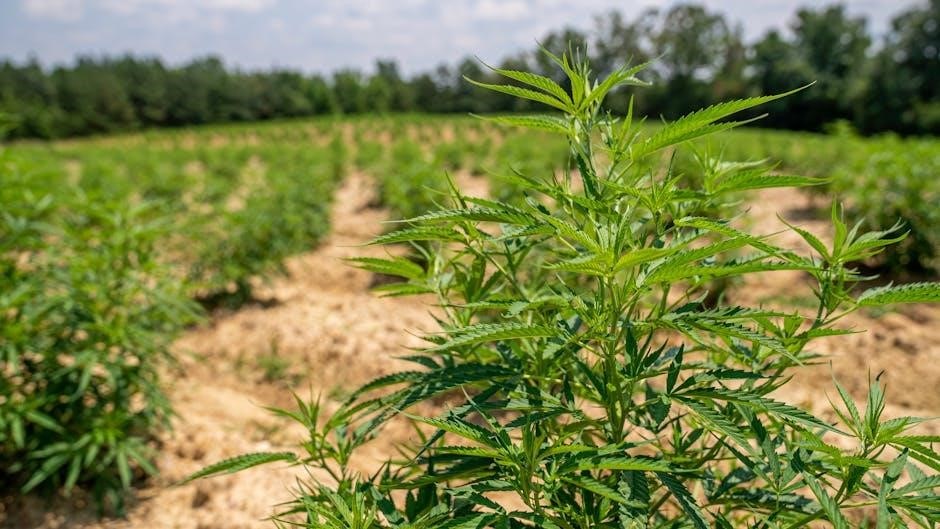
Welcome to Unit 7 of AP Biology, focusing on evolutionary biology and natural selection. This unit explores phylogeny, speciation, and evidence for evolution, preparing students for FRQs with practice questions and key concepts.
Overview of Unit 7
Unit 7 in AP Biology delves into evolutionary biology, covering key concepts like phylogeny, speciation, and evidence for evolution. Students explore mechanisms such as natural selection, genetic drift, and gene flow, which shape biodiversity. The unit emphasizes the analysis of phylogenetic trees, adaptive radiation, and biogeography. Practical skills include interpreting data and addressing FRQs effectively. Understanding these principles is crucial for mastering evolutionary processes and their applications in modern biology. Preparation involves reviewing past FRQs and practicing conceptual analysis to ensure exam readiness.
Importance of FRQs in AP Biology
FRQs (Free Response Questions) are critical in AP Biology as they assess analytical and problem-solving skills. These questions require students to apply knowledge across multiple topics, fostering deep understanding. In Unit 7, FRQs focus on evolutionary concepts, phylogenetic trees, and evidence for evolution. Practicing FRQs helps students develop clear, concise responses and time management strategies. Past FRQs, such as those from 2015 and 2013, provide valuable insights and examples, enabling students to refine their approach and excel on exam day.

Key Concepts in Evolutionary Biology
Unit 7 covers phylogeny, speciation, and natural selection, with FRQs testing understanding of evolutionary mechanisms and evidence. Practice questions enhance analytical skills and concept application.
Phylogeny and Its Significance
Phylogeny is the study of evolutionary relationships among organisms, represented through phylogenetic trees. These trees illustrate how species diverge over time, showing common ancestry and genetic relationships. Understanding phylogeny is crucial for tracing evolutionary history, identifying homologous structures, and comparing biodiversity across ecosystems. It also aids in molecular biology by linking genetic data to evolutionary paths. Phylogenetic analysis is a key tool in speciation studies and biogeography, helping scientists reconstruct the past and predict future evolutionary trends. Mastering phylogeny is essential for tackling FRQs in Unit 7, as it underpins many evolutionary concepts.
Mechanisms of Evolution
The primary mechanisms driving evolution include natural selection, genetic drift, gene flow, mutation, and non-random mating. Natural selection favors traits enhancing survival and reproduction, while genetic drift introduces random changes in allele frequencies. Gene flow transfers genetic variation between populations, promoting homogeneity. Mutations introduce new alleles, providing raw material for evolution. Non-random mating alters genotype frequencies without changing allele frequencies. These mechanisms collectively shape population genetics, influencing adaptation and speciation. Understanding these processes is vital for addressing FRQs in Unit 7, as they underpin evolutionary change and biodiversity across ecosystems.
Speciation and Its Types
Speciation is the process by which new species emerge, often due to reproductive isolation. Types include allopatric (geographic separation), sympatric (no physical barrier), and parapatric (adjacent habitats). Allopatric speciation occurs when populations are isolated by barriers like mountains or rivers, leading to genetic divergence. Sympatric speciation happens within the same geographic area, often due to ecological niche differences. Parapatric speciation involves partial isolation with occasional gene flow. Understanding these mechanisms is crucial for addressing FRQs, as they explain how biodiversity arises and how species adapt to their environments over time.

Evidence for Evolution
Fossil records, comparative anatomy, and molecular biology provide substantial evidence for evolution, illustrating shared ancestry and gradual changes in species over time, supporting evolutionary theory.
Fossil Record and Transitional Fossils
The fossil record provides a chronological timeline of life on Earth, documenting the evolution of species over millions of years. Transitional fossils, such as Tiktaalik and Ambulocetus, exhibit characteristics of both ancestral and descendant species, offering direct evidence of evolutionary transitions. These fossils bridge gaps between major groups, such as fish to amphibians or dinosaurs to birds, supporting Darwin’s theory of gradualism. The presence of vestigial structures in fossils further validates evolutionary processes, as these remnants of ancestral features are preserved despite losing their original function.
Comparative Anatomy and Homologous Structures
Comparative anatomy reveals evolutionary relationships through homologous structures, which share a common origin but may differ in function. For example, forelimbs in humans, birds, and whales exhibit similar bone arrangements despite varying purposes. Vestigial structures, like the human appendix, further illustrate evolutionary history. These anatomical similarities and differences provide strong evidence for descent with modification, supporting the theory of evolution. Such comparisons highlight how species adapt to environmental pressures while retaining ancestral traits, offering a window into their shared evolutionary past.
Molecular Biology and Genetic Evidence
Molecular biology provides strong evidence for evolution through genetic comparisons. DNA and protein sequences reveal homologies across species, indicating shared ancestry. For instance, similarities in genes like cytochrome c among organisms suggest evolutionary relationships. Molecular clocks, based on mutation rates, estimate divergence times between species. Genetic data, such as vestigial genes and pseudogenes, further support evolutionary theory. These molecular markers complement fossil and anatomical evidence, offering a comprehensive understanding of evolutionary processes and phylogenetic relationships among organisms.
Phylogenetic Trees and Their Construction
Phylogenetic trees visually represent evolutionary relationships among organisms. Constructed using DNA sequences, morphological traits, and computational methods, they help trace ancestry and diversification of species over time.
Types of Phylogenetic Trees
Phylogenetic trees are classified into types based on their structure and data representation. Rooted trees display a common ancestor, while unrooted trees show relationships without direction. Chronograms incorporate time scales, and phylograms emphasize branch lengths for evolutionary distances. Radial trees arrange taxa around a central point, improving readability. These variations help biologists visualize different aspects of evolutionary relationships, aiding in comparative analyses and hypothesis testing. Understanding these types is crucial for interpreting evolutionary data effectively.
Interpreting Phylogenetic Trees
Interpreting phylogenetic trees involves analyzing nodes, branches, and leaves to understand evolutionary relationships. Nodes represent divergence points, while branches indicate evolutionary paths. Longer branches suggest greater genetic divergence. Rooted trees have a clear outgroup, showing direction, while unrooted trees display relationships without hierarchy. Clades are groups of organisms with shared characteristics, aiding in identifying common ancestors. This interpretation helps biologists reconstruct evolutionary timelines and trace trait inheritance, making phylogenetic trees essential tools in evolutionary studies.
Applications in Biological Studies
Phylogenetic trees have diverse applications in biological studies, aiding in understanding biodiversity, disease tracking, and conservation efforts. They trace evolutionary relationships, helping identify species origins and genetic exchanges. In medicine, these trees track disease spread and viral mutations, enhancing epidemic control strategies. Phylogenetics also inform conservation by identifying species relationships, aiding in designing effective preservation programs. Additionally, they assist in studying molecular mechanisms and adaptations, providing insights into evolutionary processes at genetic and physiological levels.

Processes of Speciation
Speciation involves mechanisms like reproductive isolation and genetic drift, driving the emergence of new species. Natural selection and geographic barriers play crucial roles in this evolutionary process, as seen in examples like the Galápagos finches.
Reproductive Isolation
Reproductive isolation is a critical mechanism in speciation, preventing gene flow between populations. It can be prezygotic (e.g., geographic or temporal barriers) or postzygotic (e.g., hybrid inviability). This isolation leads to genetic divergence, ultimately forming new species. Understanding its types and examples, like the Galápagos finches, is essential for FRQs. Practice questions often explore its role in evolutionary biology, emphasizing how barriers disrupt mating or reduce hybrid fitness, a key concept in Unit 7.
Modes of Speciation
Speciation occurs through various modes, including allopatric, sympatric, parapatric, and peripatric. Allopatric speciation involves geographic isolation, while sympatric occurs without physical barriers, often due to reproductive differences. Parapatric speciation happens in adjacent populations with some gene flow, and peripatric involves small peripheral populations. These modes highlight how reproductive isolation and genetic divergence lead to new species. Understanding these mechanisms is crucial for FRQs, as they often test knowledge of speciation processes and their role in evolutionary biology, supported by examples like the Galápagos finches.
Role of Geographic Barriers
Geographic barriers play a critical role in speciation by preventing gene flow between populations. Physical barriers, such as mountains or rivers, can isolate populations, leading to allopatric speciation. Over time, separated populations evolve independently, accumulating genetic differences. Non-physical barriers, like environmental gradients, can also restrict gene flow. These barriers are essential for reproductive isolation, a key mechanism in speciation. For example, the Galápagos finches evolved into distinct species due to geographic isolation. Understanding geographic barriers is vital for addressing FRQs on speciation and evolutionary processes.

Biogeography and Its Principles
Biogeography studies the geographic distribution of organisms, exploring patterns of diversity and evolutionary adaptations. It examines historical and ecological factors shaping species’ ranges and interactions with environments.
Geographic Distribution of Organisms
The geographic distribution of organisms refers to their spatial arrangement across Earth, influenced by factors like climate, geology, and evolutionary history. Biogeographical patterns reveal how species adapt to environments, migrate, or become isolated. For example, polar bears thrive in Arctic regions, while tropical species dominate warmer climates. This distribution often correlates with ecological niches, genetic diversity, and historical events, such as continental drift. Understanding these patterns helps explain biodiversity and supports conservation efforts by identifying areas of unique or threatened species.
Historical Biogeography
Historical biogeography examines how geographical changes over time, such as continental drift and glaciation, have shaped species distributions. It links fossil records, phylogenetic trees, and geological events to explain current biogeographical patterns. For example, the breakup of Pangaea influenced the dispersal of ancient species, while ice ages isolated populations, driving speciation. This field integrates paleontology, geology, and genetics to reconstruct evolutionary histories and understand how past events have molded the modern geographic diversity of life on Earth.
Ecological Biogeography
Ecological biogeography focuses on how environmental factors and species interactions shape the distribution of organisms. It examines how competition, predation, climate, and resource availability influence where species thrive. For example, adaptive radiation, like the Galápagos finches, demonstrates how ecological niches drive diversification. This subfield emphasizes the dynamic interplay between organisms and their environments, helping explain why certain species dominate specific habitats. Understanding these ecological principles is crucial for addressing FRQs on biogeography and evolutionary biology in AP Biology.

Natural Selection and Its Role in Evolution
Natural selection drives evolution by favoring traits that enhance survival and reproduction. Key components include variation, heritability, and differential reproduction, as seen in examples like antibiotic resistance and peppered moths.
Key Components of Natural Selection
Natural selection operates through three main components: heritable variation, differential reproduction, and adaptation. Organisms exhibit genetic variation, leading to differences in traits. Environmental pressures favor individuals with advantageous traits, enabling them to reproduce more successfully. This process drives evolutionary change, as beneficial traits become more common in populations over time. Examples include antibiotic resistance in bacteria and the evolution of the peppered moth during the Industrial Revolution, demonstrating how natural selection shapes species’ fitness and survival.
Examples of Natural Selection
Natural selection is evident in the evolution of peppered moths, where dark-colored variants became dominant due to industrial pollution. Antibiotic resistance in bacteria illustrates selection for advantageous traits. Similarly, Galapagos finches developed diverse beak shapes in response to food availability, showcasing adaptation. These examples highlight how environmental pressures drive evolutionary changes, favoring traits that enhance survival and reproduction.
Adaptations and Fitness
Adaptations are traits that enhance an organism’s ability to survive and reproduce in its environment, directly tied to fitness. Examples include the peppered moth’s color change and bacterial antibiotic resistance. These traits improve fitness by increasing survival rates and reproductive success. Fitness is relative, as it depends on environmental conditions. Over time, natural selection favors adaptations that align with ecological pressures, driving evolutionary change and ensuring species’ survival. Understanding adaptations is crucial for analyzing FRQs in AP Biology Unit 7.

Genetic Drift and Its Impact
Genetic drift randomly alters allele frequencies, reducing diversity and sometimes fixing harmful alleles. It’s especially impactful in small populations and is a key topic in AP Biology Unit 7 FRQs.
Mechanisms of Genetic Drift
Genetic drift occurs through random events like bottlenecks, founder effects, and genetic hitchhiking. These mechanisms alter allele frequencies, often by chance, leading to loss of genetic diversity in populations. Founder effects happen when a new population starts from a small group, carrying only a subset of the original alleles. Bottlenecks reduce population size, drastically changing allele frequencies. Genetic hitchhiking, where neutral alleles are swept with advantageous ones, also contributes to drift. These processes are crucial for understanding evolutionary changes in AP Biology Unit 7.
Effects on Population Genetics
Genetic drift significantly impacts population genetics by altering allele frequencies. It can lead to the loss of rare alleles, reducing genetic diversity. In small populations, drift can cause fixation or extinction of alleles, influencing adaptability. This random change can result in populations becoming genetically distinct, even without selection pressures. Such effects are crucial for understanding evolutionary dynamics, as drift can override natural selection in shaping genetic variation. These concepts are essential for analyzing FRQs in AP Biology Unit 7, particularly in questions addressing population genetics and evolutionary mechanisms.
Difference from Natural Selection
Genetic drift differs from natural selection as it is a random process, not driven by environmental pressures. While natural selection favors advantageous traits, drift alters allele frequencies unpredictably. Drift can lead to fixation or loss of alleles, regardless of their fitness. This stochasticity contrasts with selection, which consistently promotes adaptive traits. Unlike selection, drift does not inherently improve population fitness, making it a distinct evolutionary force. Understanding this distinction is key for analyzing population genetics and evolutionary mechanisms in AP Biology Unit 7 FRQs.

Gene Flow and Its Significance
Gene flow is the transfer of genetic variation between populations, reducing differences and increasing diversity. It plays a crucial role in population genetics and evolution.
Types of Gene Flow
Gene flow refers to the movement of genetic information between populations, leading to changes in allele frequencies. The main types of gene flow include migration, where individuals physically move between populations, and human-induced factors, such as the intentional or accidental introduction of species to new areas. Additionally, gene flow can occur through immigration (genes entering a population) and emigration (genes leaving a population). This genetic exchange increases genetic diversity and can lead to population homogenization, counteracting effects like genetic drift and promoting evolutionary consistency across populations;
Impact on Population Genetics
Gene flow significantly impacts population genetics by altering allele frequencies and increasing genetic diversity. It reduces inbreeding and genetic drift effects, homogenizing populations and promoting evolutionary consistency. By introducing new alleles, gene flow enhances adaptability and can counteract population isolation. Over time, this genetic exchange fosters interconnectedness among populations, influencing their evolutionary trajectories and maintaining species cohesion. Understanding gene flow’s role is crucial for analyzing population dynamics and conservation strategies in evolutionary biology.
Barriers to Gene Flow
Barriers to gene flow disrupt the exchange of genetic material between populations, leading to reproductive isolation. Physical barriers, such as mountains or rivers, prevent migration and mating. Reproductive barriers, like differences in mating behaviors or genetic incompatibilities, also limit gene flow. Ecological barriers, such as niche specialization, can reduce interbreeding. These barriers contribute to population divergence and speciation. Understanding these barriers is essential for analyzing how populations evolve independently and maintain genetic distinctness over time, a key concept in evolutionary biology and AP Biology Unit 7 FRQs.
Molecular Biology and Evolution
Molecular biology explores the role of DNA and proteins in evolution, utilizing tools like molecular clocks and phylogenetic analysis to study evolutionary relationships and genetic changes over time.
Role of DNA and Proteins in Evolution
DNA and proteins are central to evolutionary processes. Mutations in DNA drive genetic variation, while proteins, such as enzymes and hemoglobin, influence organismal traits. Comparing amino acid sequences in proteins like cytochrome c across species reveals evolutionary relationships. Molecular clocks, based on DNA mutation rates, estimate divergence times. This genetic evidence supports phylogenetic trees, showing how species evolve over time. Such studies highlight the role of molecular biology in understanding evolutionary mechanisms and adaptations.
Molecular Clocks
Molecular clocks estimate evolutionary divergence times by measuring genetic differences. They rely on the concept that DNA mutations accumulate at a steady rate. By comparing sequences, scientists infer how long ago species shared a common ancestor. This method assumes a constant mutation rate, though factors like selection can influence accuracy. Molecular clocks link genetic data to geological timelines, providing critical evidence for evolutionary relationships and historical biogeography.
Phylogenetic Analysis
Phylogenetic analysis examines evolutionary relationships using genetic data. By comparing DNA or protein sequences, scientists construct trees that visualize shared ancestry. This method relies on molecular biology principles, enabling researchers to trace how species diverged over time. Techniques like maximum parsimony and maximum likelihood help build accurate trees. Phylogenetic analysis is crucial for understanding biodiversity, tracking evolutionary changes, and resolving questions about organismal relationships, making it a cornerstone of modern evolutionary biology.

Adaptive Radiation
Adaptive radiation is the rapid evolutionary divergence of a single species into multiple species, driven by ecological opportunities and genetic variation, leading to diverse adaptations.
Definition and Examples
Adaptive radiation refers to the rapid evolutionary divergence of a single species into multiple species, driven by ecological opportunities and genetic variation. A classic example is the radiation of Darwin’s finches in the Galápagos Islands, where distinct beak shapes evolved to exploit different food sources. Similarly, Hawaiian honeycreepers diversified into various species with specialized traits for different habitats. These examples illustrate how adaptive radiation leads to increased biodiversity as species adapt to vacant ecological niches.
Such radiations are often triggered by colonization of new environments or the emergence of evolutionary innovations. Molecular studies and fossil records provide insights into these processes, highlighting their significance in evolutionary biology.
Factors Promoting Adaptive Radiation
Adaptive radiation is driven by ecological opportunities, genetic variation, and natural selection. The availability of unoccupied niches allows species to diversify without competition. Genetic diversity provides the raw material for evolutionary changes, enabling adaptation to different environments. Geographic isolation further promotes speciation by preventing gene flow. Additionally, evolutionary innovations, such as novel traits or behaviors, can enhance radiation by opening new ecological possibilities. These factors collectively create conditions where species can rapidly evolve into diverse forms, maximizing their fitness in varied habitats and leading to increased biodiversity.
Case Studies
Case studies highlight key examples of adaptive radiation, such as the Galápagos finches and Hawaiian honeycreepers, which evolved into diverse species exploiting different ecological niches. Darwin’s finches exemplify how beak shapes adapted to food sources, while Hawaiian honeycreepers showcase rapid speciation in isolated habitats. These examples demonstrate how geographic isolation, genetic variation, and ecological opportunities drive evolutionary divergence, leading to the development of unique traits and maximizing fitness in specific environments. Such studies are central to understanding adaptive radiation and its role in biodiversity.

Practice Questions and FRQs
Unit 7 practice questions and FRQs cover evolutionary biology, natural selection, and speciation. Example questions include analyzing phylogenetic trees, explaining mechanisms of evolution, and applying adaptive radiation concepts.
Types of FRQs in Unit 7
In Unit 7, FRQs typically include questions on evolutionary biology, such as analyzing phylogenetic trees, explaining speciation mechanisms, and interpreting evidence for evolution. Some questions focus on molecular biology, asking students to connect genetic data to evolutionary processes. Others require the application of biogeography principles or the analysis of natural selection’s role in adaptation. FRQs may also involve experimental design or data interpretation related to evolutionary concepts. These questions assess critical thinking, comprehension of key concepts, and the ability to synthesize information across topics like phylogeny, genetic drift, and adaptive radiation.
How to Approach FRQs
To excel in Unit 7 FRQs, start by thoroughly reading and understanding the question. Identify key terms and concepts, then outline your answer before writing. Focus on clarity and conciseness, ensuring each part of the question is addressed. Practice analyzing phylogenetic trees, explaining evolutionary mechanisms, and connecting molecular biology to broader concepts. Review past FRQs to familiarize yourself with common question types and timing. Use specific examples and evidence to support your answers, and avoid unnecessary jargon. Regular practice will help refine your critical thinking and writing skills.
Sample Questions and Solutions
Sample Question 1: Explain how phylogenetic trees provide evidence for evolutionary relationships.
Solution: Phylogenetic trees illustrate shared characteristics, with branch points indicating common ancestors. Similar traits among species suggest recent divergence, while differences indicate deeper splits.
Sample Question 2: Describe how natural selection drives speciation.
Solution: Natural selection favors traits enhancing survival, leading to adaptation. Reproductive isolation follows as populations evolve differently, eventually forming new species.
These examples demonstrate how to apply concepts to FRQs effectively.
Unit 7 covers evolutionary biology, phylogeny, and speciation, with FRQs testing understanding of natural selection and biogeography. Mastering these concepts is key for exam success.
Unit 7 emphasizes evolutionary biology, focusing on mechanisms like natural selection and genetic drift. Key concepts include phylogeny, speciation, and evidence for evolution, such as fossils and molecular biology. Phylogenetic trees illustrate evolutionary relationships, while processes like adaptive radiation and gene flow shape biodiversity. Understanding these concepts is crucial for tackling FRQs, which often require applying knowledge to real-world scenarios and experimental data. Mastery of these topics will enhance your ability to analyze evolutionary patterns and their biological significance.
Final Tips for Success
To excel in Unit 7, focus on mastering phylogenetic trees and evolutionary mechanisms. Practice interpreting FRQs and applying concepts to real-world scenarios. Review molecular biology and biogeography principles thoroughly. Use active learning techniques, such as creating concept maps, to reinforce understanding. Time management during exams is critical—allocate 15-20 minutes per FRQ. Stay calm, read questions carefully, and address all parts. Seek feedback on practice questions to refine your responses. Adequate sleep and consistent study habits will also enhance your performance.